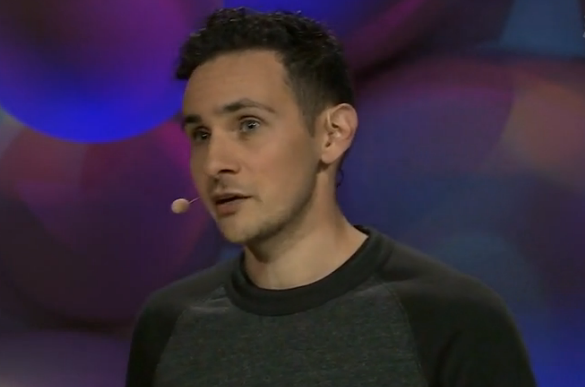So, even the more objective parts about being human are hard to describe. Like, conversation.
甚至很多關于人性的客觀方面也很難描述。比如,對話。
Have you ever really tried to break down the steps?
你曾經嘗試過分解談話的步驟嗎?
So think about sitting with your friend at a coffee shop and just having small talk.
試著想象一下,你和你的朋友坐在咖啡館,進行簡單的交談。
How do you know when to take a turn? How do you know when to shift topics?
你怎么知道輪到你說話了?你怎么知道什么時候該轉換話題?
And how do you even know what topics to discuss?
你怎么知道要討論些什么?
See, most of us don't really think about it, because it's almost second nature.
大多數人都不會想這些問題,因為這對我們來說是很自然的。
And when we get to know someone, we learn more about what makes them tick, and then we learn what topics we can discuss.
當我們認識一個人的時候,我們會對他們越來越了解,然后我們會知道能聊些什么話題。
But when it comes to teaching AI systems how to interact with people, we have to teach them step by step what to do.
但是,當你教人工智能怎樣與人類互動時,我們需要一步一步教它們該如何做。
And right now, it feels clunky.
而現在,這個過程還感覺很笨拙。
If you've ever tried to talk with Alexa, Siri or Google Assistant, you can tell that it or they can still sound cold.
如果你曾嘗試和Alexa、Siri或谷歌助手聊天,你可以感覺得到,它們仍聽上去冷冰冰的。
And have you ever gotten annoyed when they didn't understand what you were saying
你是否曾經因為它們不明白你說什么而變得惱怒,
and you had to rephrase what you wanted 20 times just to play a song?
比如為了讓它們放一首歌,你得說上20次?

Alright, to the credit of the designers, realistic communication is really hard.
不過我們也要理解設計師,畢竟讓機器學會真實的溝通是非常難的。
And there's a whole branch of sociology, called conversation analysis,
有一個社會學的分支,叫做會話分析,
that tries to make blueprints for different types of conversation.
它嘗試做不同對話類型的藍圖。
Types like customer service or counseling, teaching and others.
例如像客戶服務、心理咨詢、教授課程等等的會話類型。
I've been collaborating with a conversation analyst at the lab to try to help our AI systems hold more human-sounding conversations.
我已經在和會話分析學家在實驗室展開合作,嘗試幫助我們的人工智能系統進行更多的人性化的對話。
This way, when you have an interaction with a chatbot on your phone or a voice-based system in the car,
這樣,當你和手機聊天機器人進行互動時,或者和車載語音系統互動時,
it sounds a little more human and less cold and disjointed.
這種聲音就聽上去更人性,不那么冷淡和缺乏邏輯。
So I created a piece of art that tries to highlight the robotic, clunky interaction to help us understand, as designers,
我創造的這個藝術品,重點突顯了機械化的、笨拙的互動方式,以幫助我們這些設計師明白,
why it doesn't sound human yet and, well, what we can do about it.
為什么它聽上去不像人類,我們該如何解決這個問題。
The piece is called Bot to Bot and it puts one conversational system against another and then exposes it to the general public.
這個藝術品叫Bot to Bot,它將一個會話系統搭建在另一個會話系統之上,然后展示給公眾。
And what ends up happening is that you get something that tries to mimic human conversation, but falls short.
最終會發生的就是,它嘗試模仿人類的對話,但是卻明顯有不足之處。
Sometimes it works and sometimes it gets into these, well, loops of misunderstanding.
有的時候它還可以,而有的時候會陷入誤解的循環。
So even though the machine-to-machine conversation can make sense, grammatically and colloquially,
雖然機器與機器的對話從語法、用意上能讓人明白,
it can still end up feeling cold and robotic.
但是你還是能感覺到這個對話的冰冷和機械化。
And despite checking all the boxes, the dialogue lacks soul and those one-off quirks that make each of us who we are.
盡管對話的其他要素都具備,但卻缺少了靈魂,缺少了那些使我們之所以為人類的特質。



